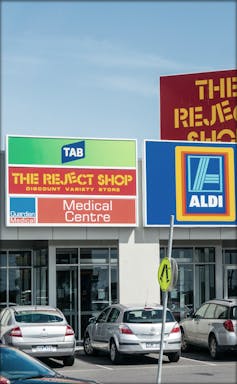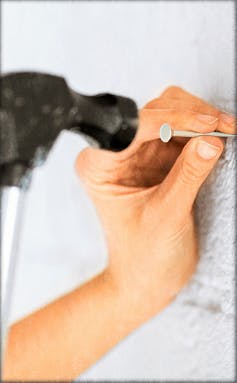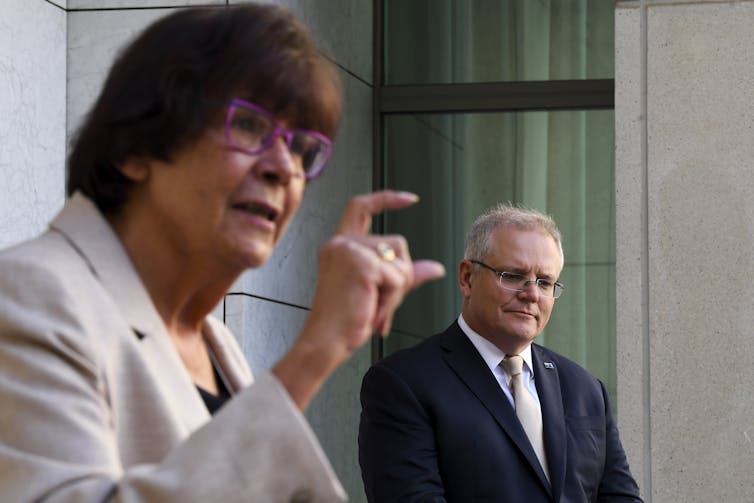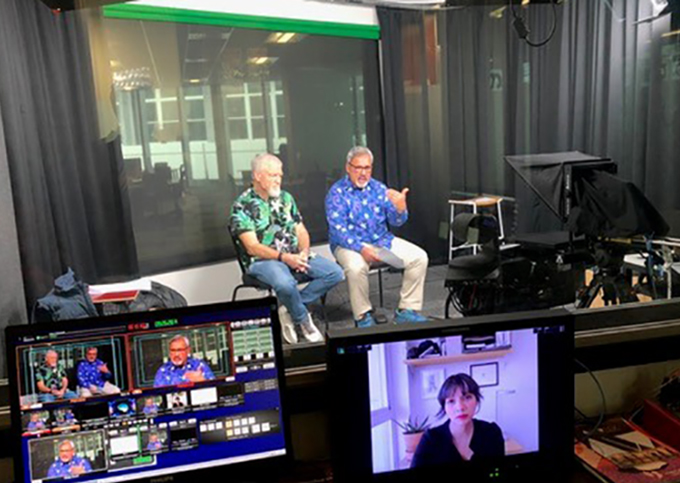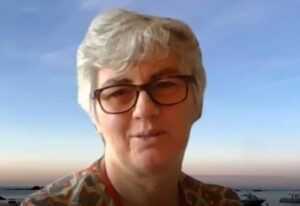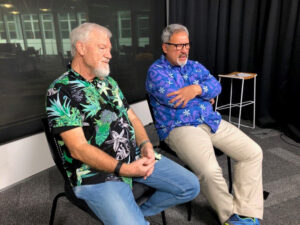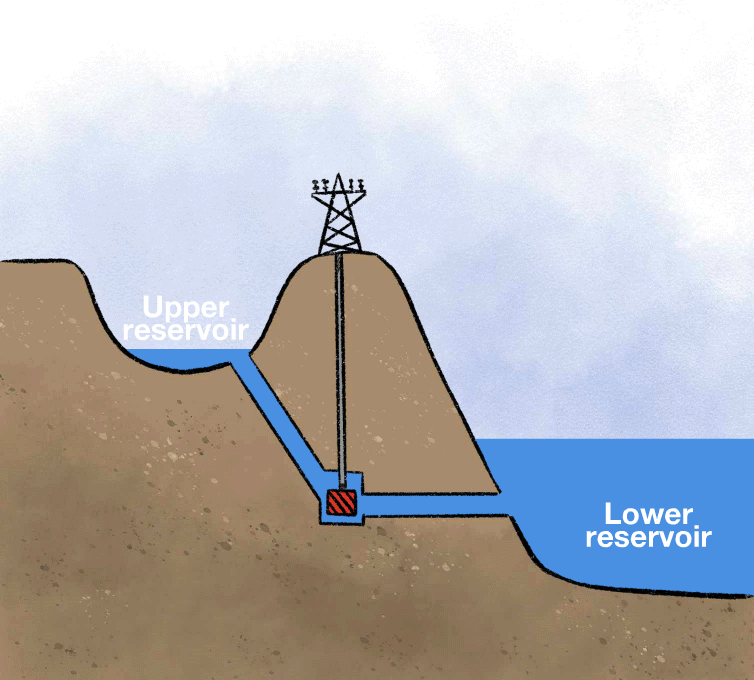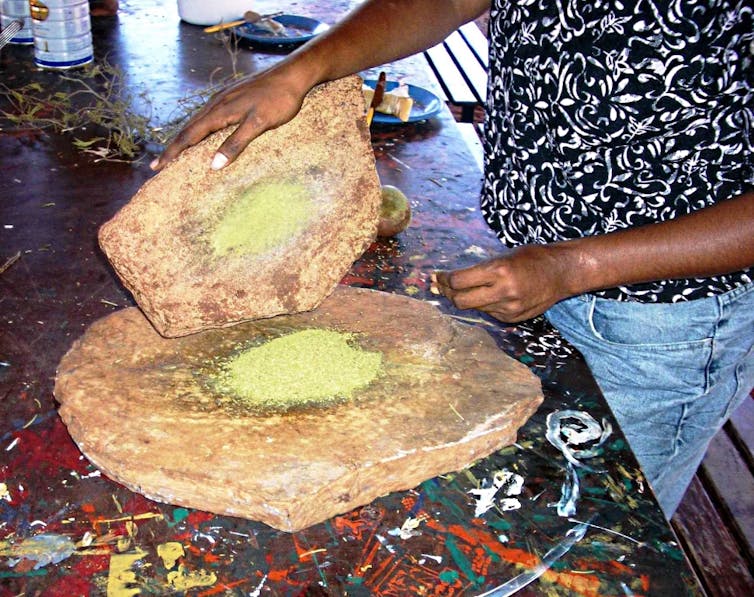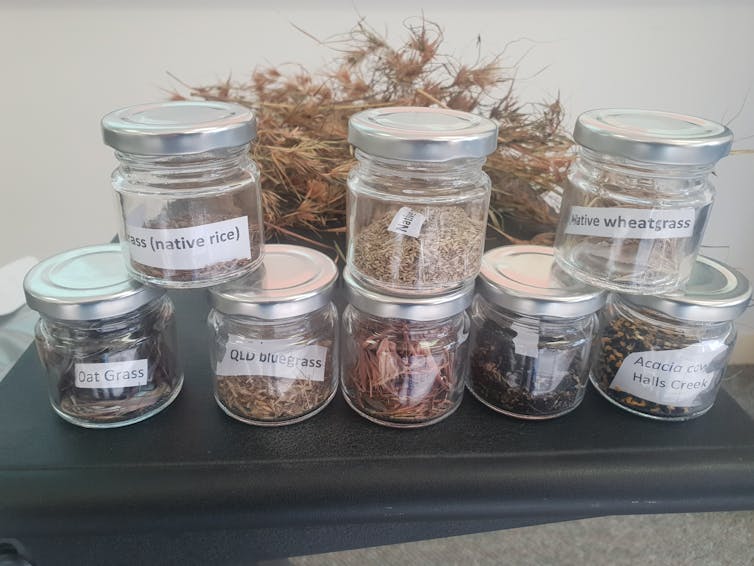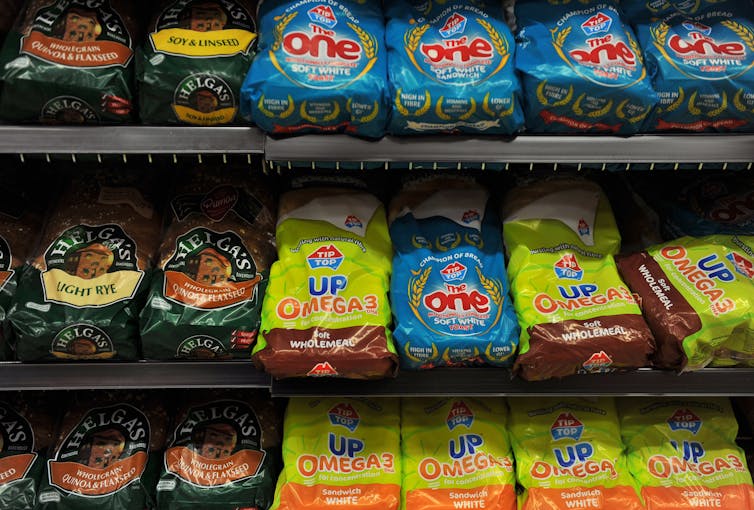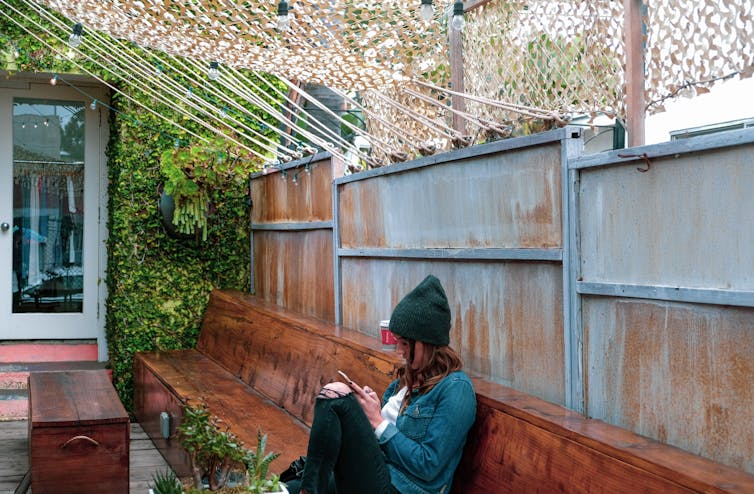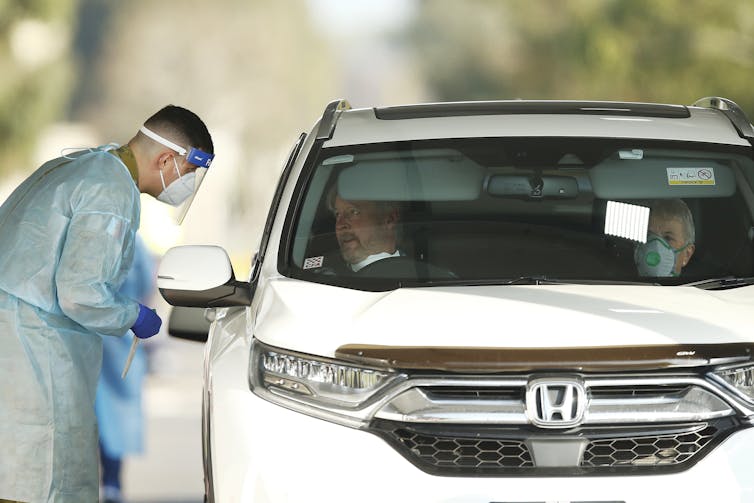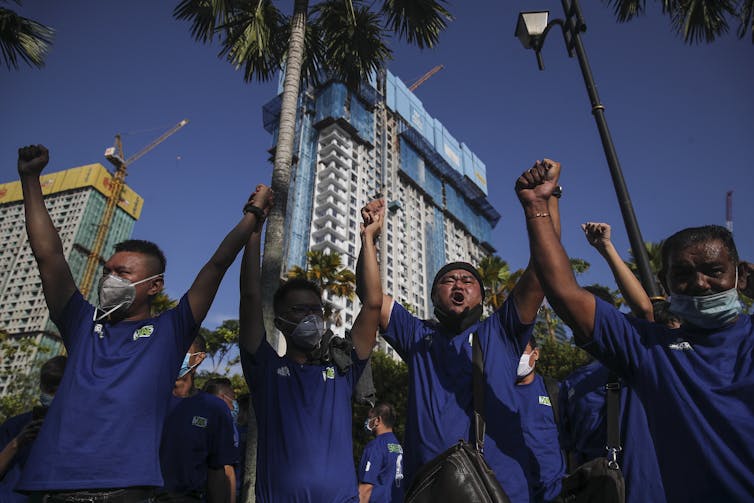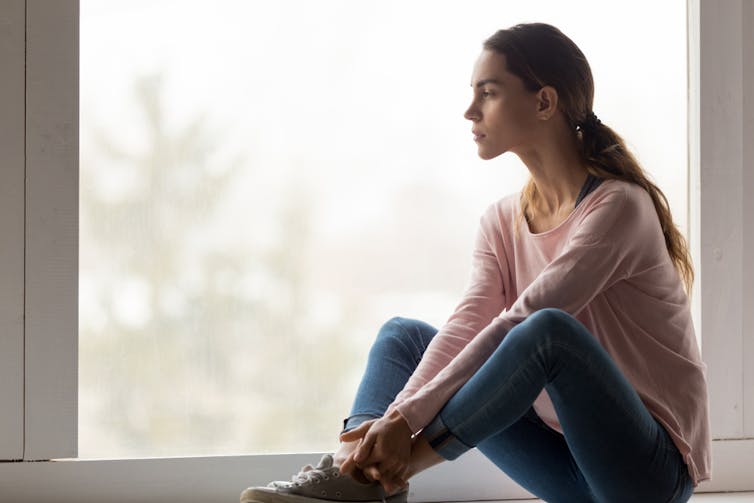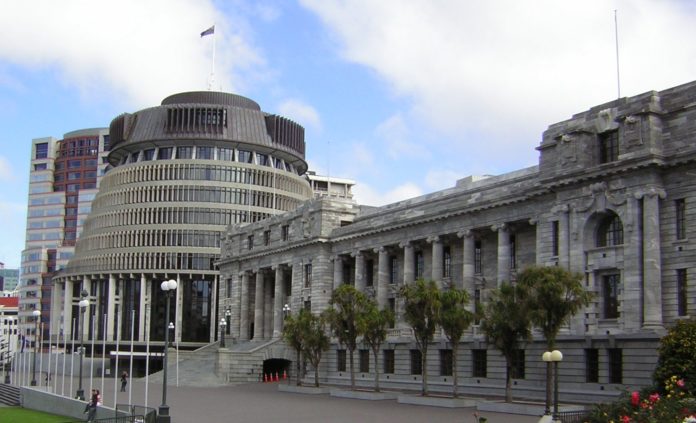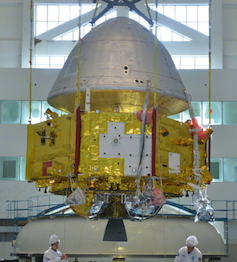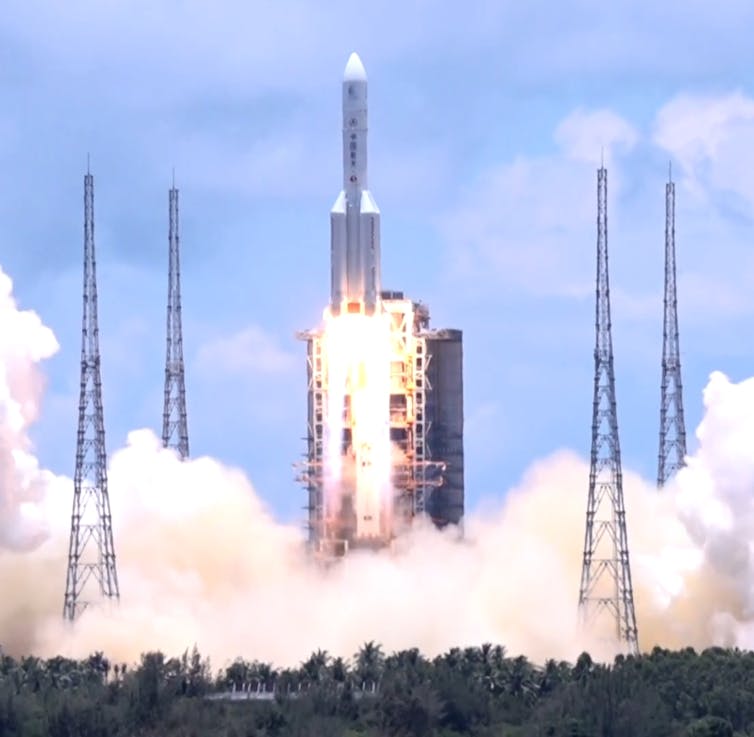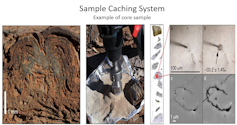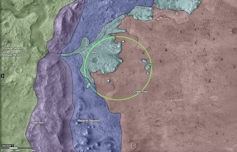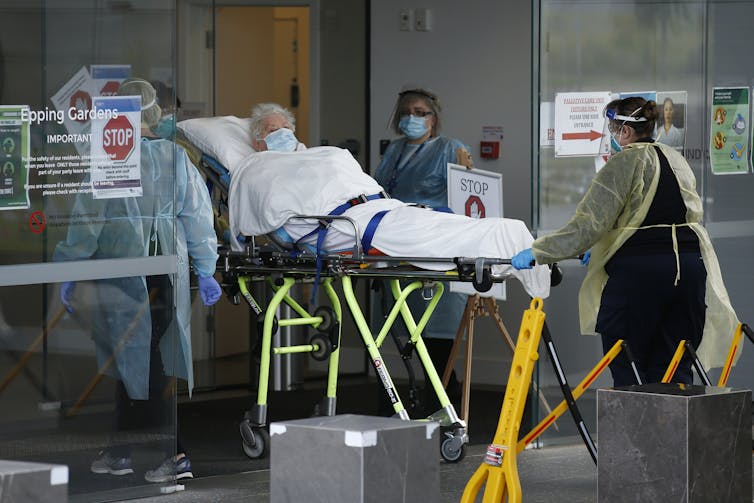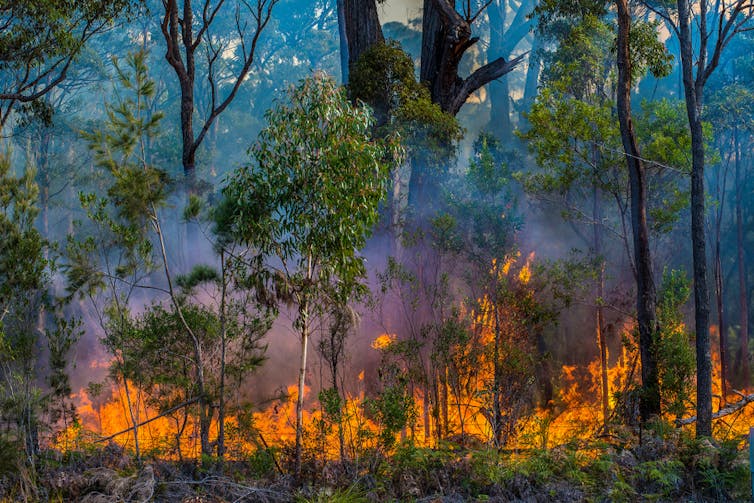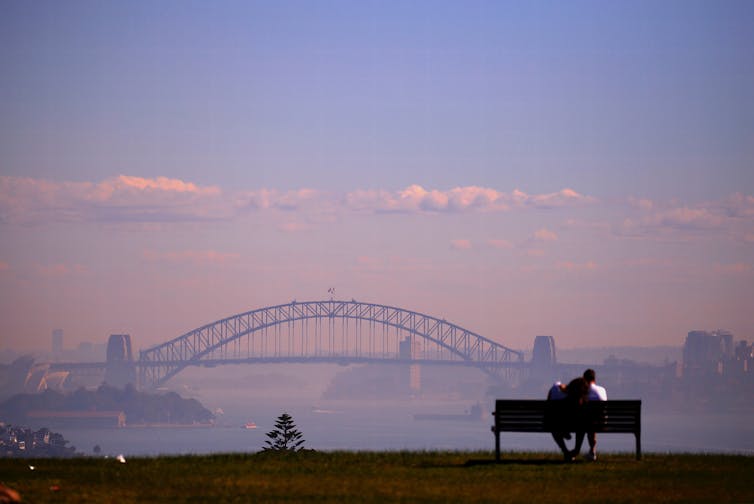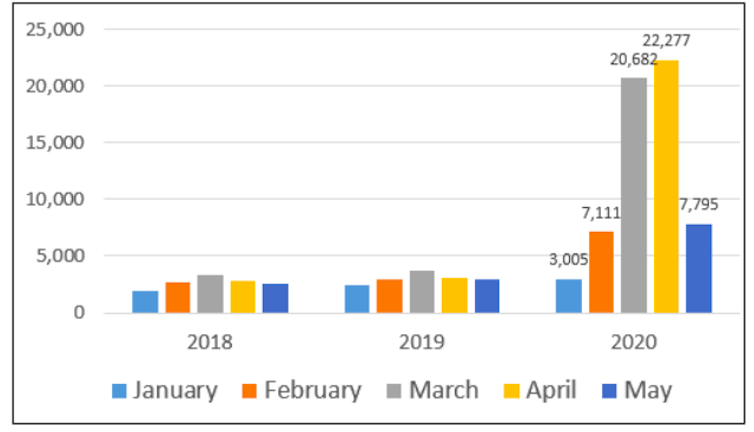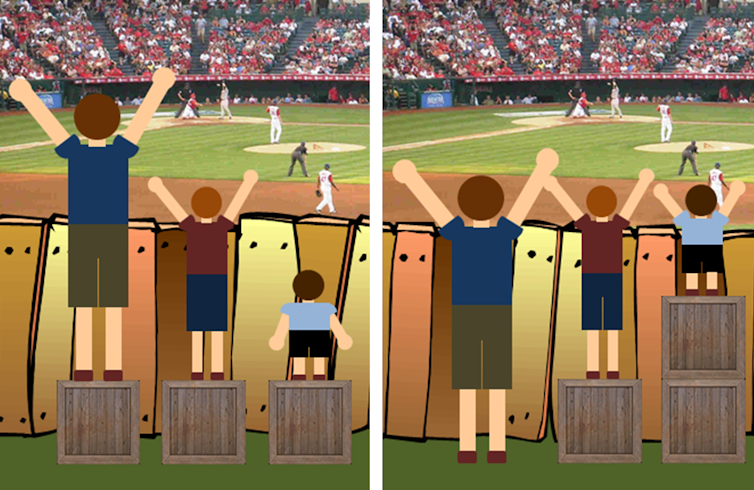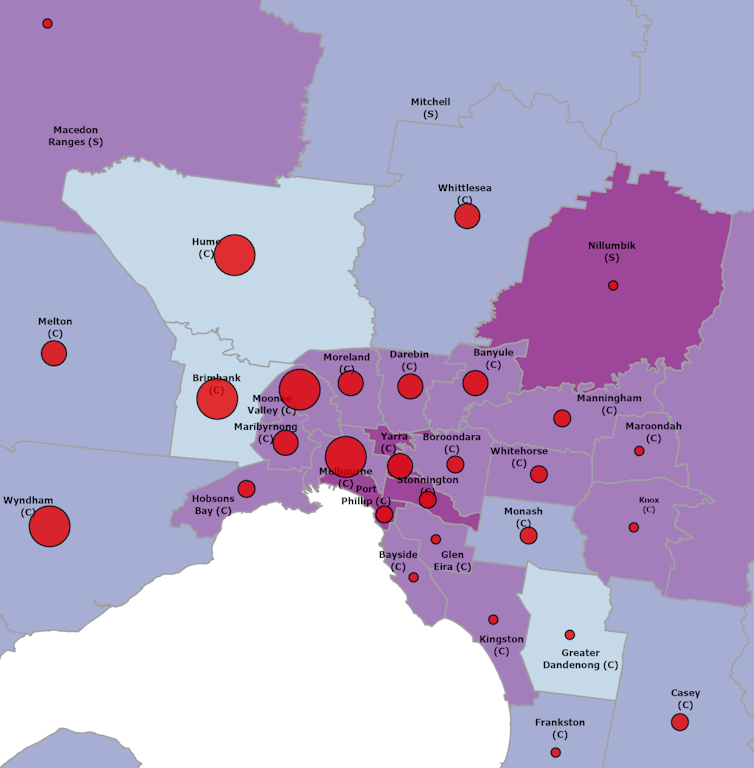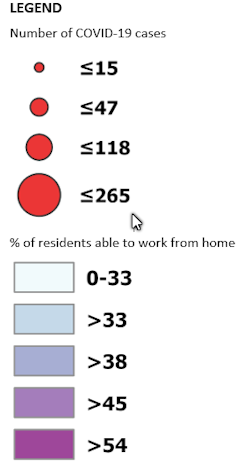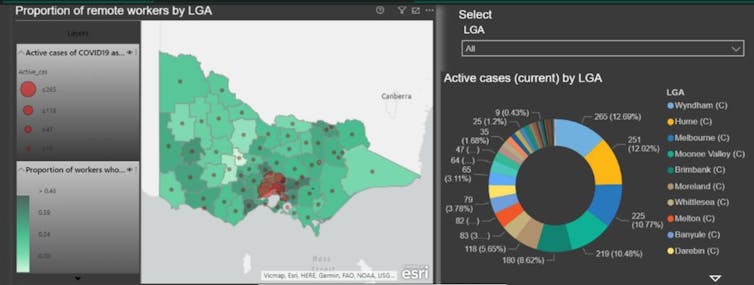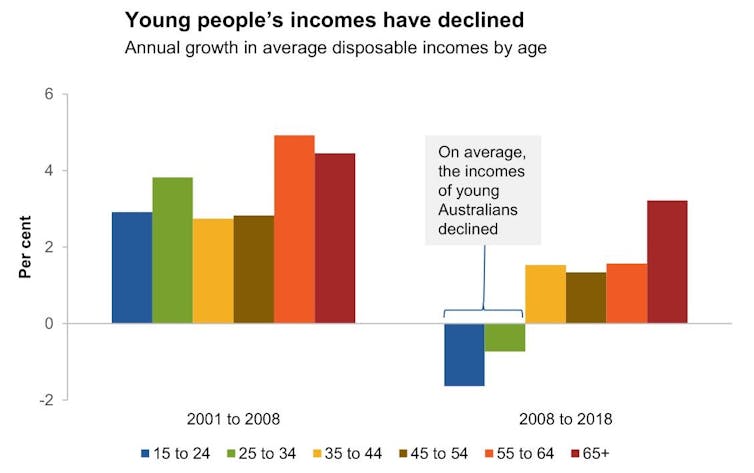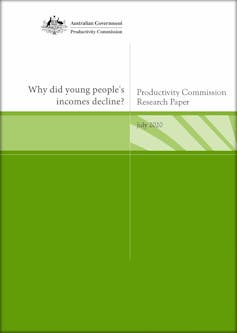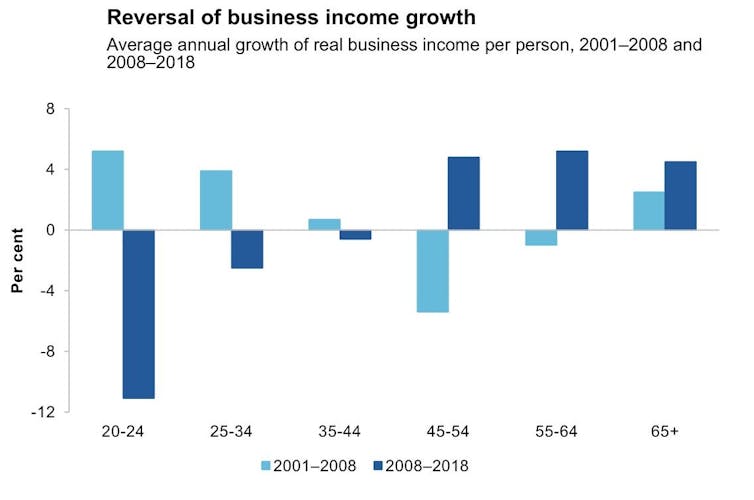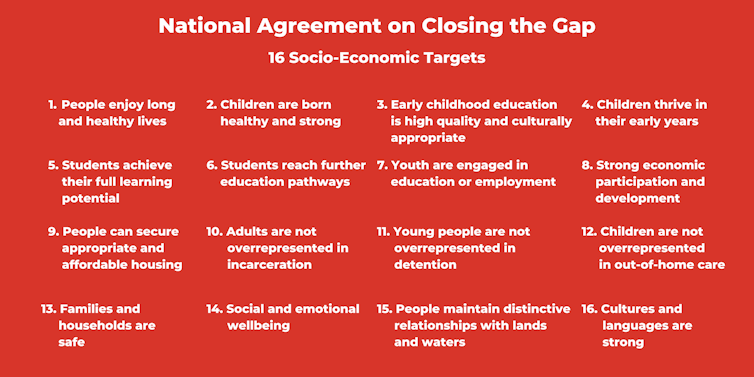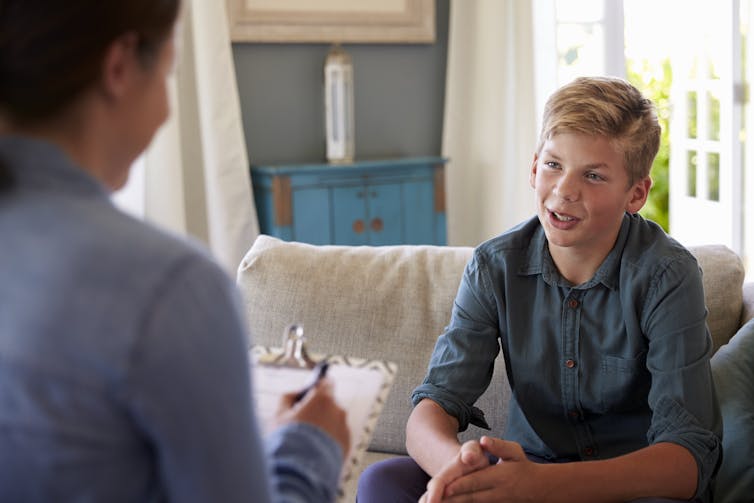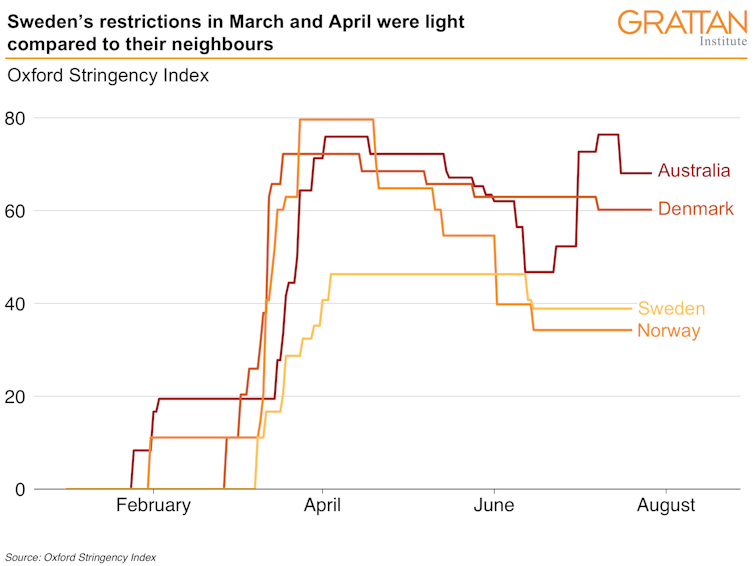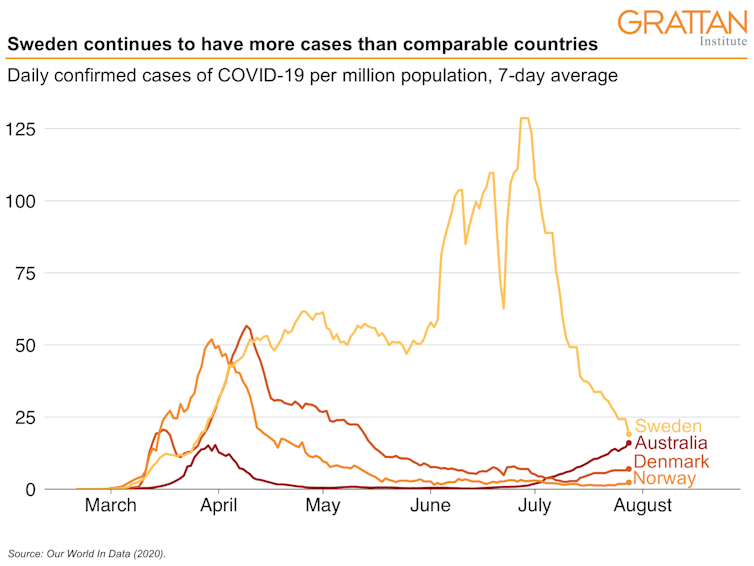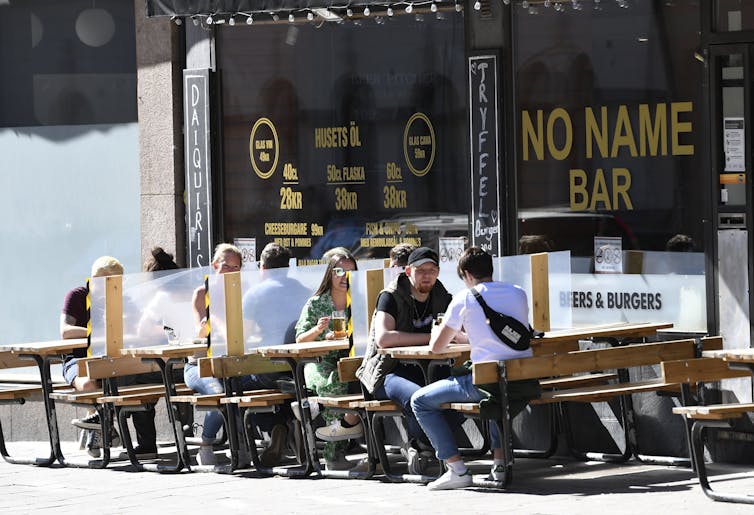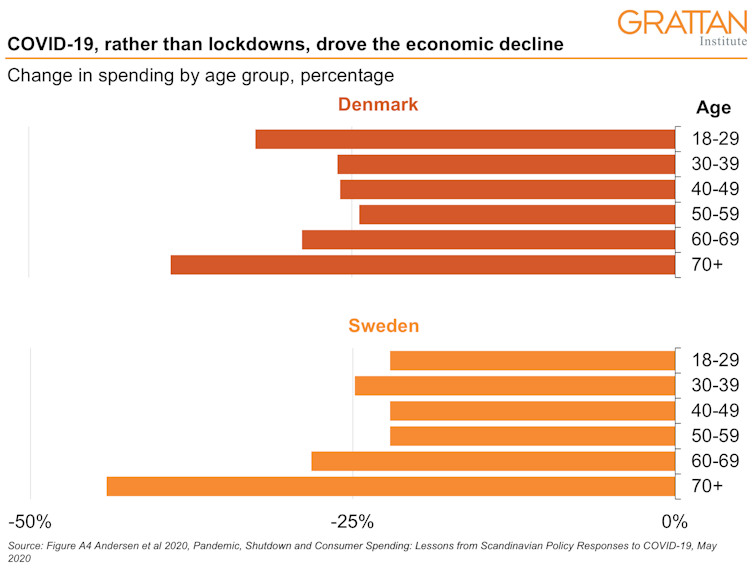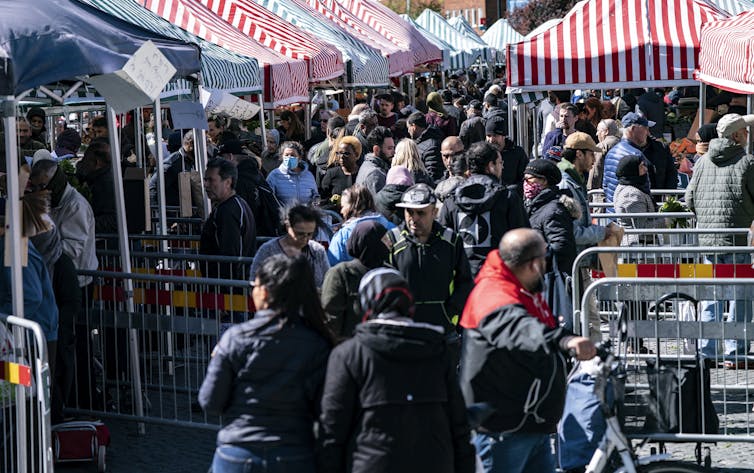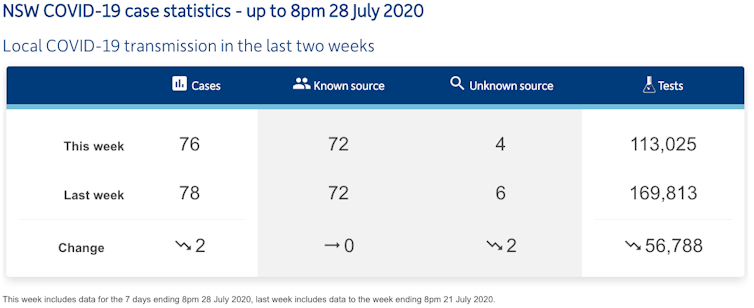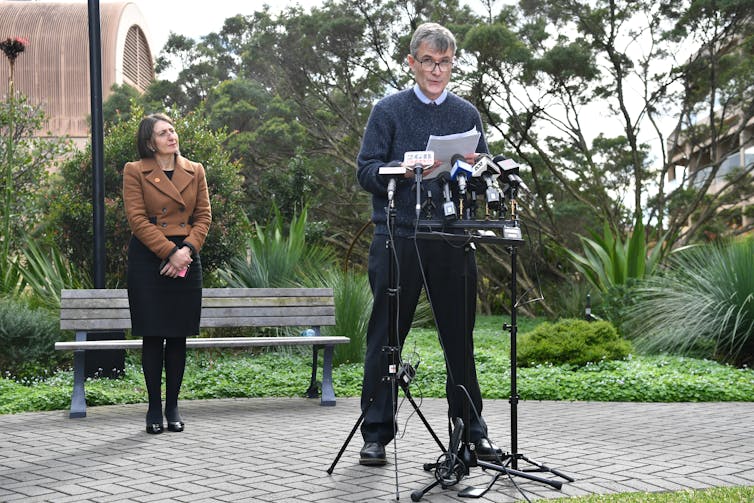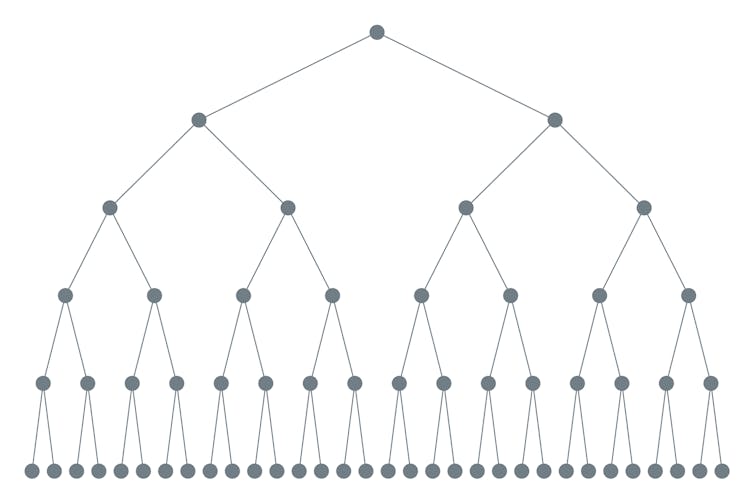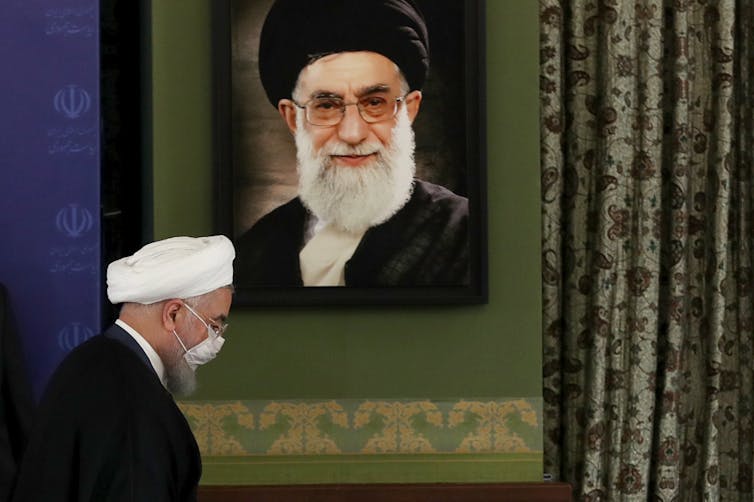Source: Council on Hemispheric Affairs – Analysis-Reportage
By Tamanisha J. John
From Miami, Florida
Guyana is facing political turmoil given that the March 2020 elections have yet to be recognized by the incumbent APNU + AFC alliance coalition government. As of July 28th 2020, the APNU + AFC alliance coalition government claims that their electoral loss to the PPP/C almost 5 months ago, was an orchestrated attempt at regime change in Guyana. Not only are these claims by the APNU + AFC alliance coalition government unfounded, but they also threaten to undermine Guyana’s electoral integrity, increase racial hostilities in the country, and undermine Guyanese sovereignty. The manufactured political crisis makes Guyana vulnerable to foreign intervention, given Guyana’s ascent into the ranks of the world’s oil exporting countries in 2020 and its geographical positioning as Venezuela’s neighbor. These factors have placed the political situation unfolding within Guyana on the radar of many Western countries looking to secure contracts for oil from a Guyanese government, and the U.S. government in particular which wants to intervene in neighboring Venezuela.
Overview
On December 21st, 2018 a vote of no confidence against the ruling A Partnership for National Unity + Alliance for Change (APNU + AFC) coalition government in Guyana shocked the country. The vote was expected to follow along party lines, stripping the People’s Progressive Party/Civic (PPP/C) opposition of being able to get such a motion through. Expectations crumbled when the opposition was able to win the vote on a narrow 33-32 margin, made possible by a single defector (Charrandass Persaud, AFC) within the incumbent alliance coalition government. The vote would set the stage for new elections to be held in 90 days, with the winner of the new elections gaining hold of the presidency.
However, legal challenges to the motion itself remained throughout the first half of 2019, with various courts either validating or invalidating the vote of no confidence. It would not be until the second week of June of 2019 that the motion would be upheld by the Caribbean Court of Justice (CCJ) – Guyana’s highest court of appeals – guaranteeing that new elections would be held in Guyana. There would be further delays for holding elections in 2019, as the Guyana Elections Commission (GECOM) – the statutory body responsible for overseeing the electoral process – faced its own series of challenges, including a change in Chairperson.
Per the CCJ’s requirements, a new GECOM Chairperson appointed by incumbent President David Granger (APNU + AFC) and agreed upon by the opposition leader Bharrat Jagdeo (PPP/C), would make the process more independent and fair. Justice Claudette Singh, the first woman Chairperson of GECOM, was announced as the new Chairperson on July 26th of 2019. Two months later in September, GECOM made it clear that it would be unable to conduct credible elections until the end of February 2020. Thus, the new round of elections was scheduled and carried out in March of 2020—a full two years before the constitutional term of the APNU + AFC presidency was to end.
By all credible measures, as indicated by local and international observers like GECOM and CARICOM, the APNU + AFC alliance coalition lost the March 2020 elections. Yet, four months after the elections, and the already divided APNU + AFC coalition government leaders have yet to formally cede power. Instead, some APNU + AFC leaders maintain that the results of the March 2020 elections, which showed a PPP/C win, are still under judicial review. The longer that the APNU + AFC alliance coalition takes to admit defeat, the more likely racialized political divisions within Guyana will increase. Such social and political dynamics have the potential to undermine the cohesiveness necessary for the full exercise of national sovereignty by Guyana. All this, at a time of heightened tensions between Guyana and Venezuela over oil resources, boundary disputes, and the real threat of foreign intervention in the region.
Allegations of election rigging is a theme of Guyana’s elections every election year, even though it is the case that these allegations are consistently unfounded by observers [Vasciannie 2017, 185]. Nonetheless, elections and election results in Guyana are always hotly contested between the politicians and the populace— due to blind party loyalty that paints any and all criticism of one’s party, and loss by one’s preferred party, as insidious and racist manipulation by the other side. Incumbent President Granger (APNU + AFC) has been a consistent critic of Guyanese elections—although not of the 2015 elections, in which the alliance coalition of which he was part won the election. Needless to say, the 2015 election was not without its allegations of electoral fraud, as the PPP/C alleged Western interference, rigging, and ballot stuffing for their 2015 loss. Thus, regaining power for what the PPP claimed a fraudulent 2015 election has been the hallmark of their opposition presence against the APNU + AFC. The PPP/C has called for new elections ever since 2015.
If this all sounds familiar in 2020, it’s because the same playbook has been sadly utilized by the losing party every election cycle in Guyana since 1964. The 2020 elections are only unique given the extremely high stakes in this election for Guyana and for the geopolitics of the region, which provides more urgency for these claims. These stakes include: (1) newfound oil wealth in Guyana, that is expected to enrich the country and allow the party that rules over the oil to gain political supremacy; and (2) an imperial and bipartisan consensus in Washington to bring about regime change in Venezuela. This foreign meddling is supported by Colombia and Brazil, which like Guyana, also border Venezuela.
Guyana’s 2020 elections draw intense scrutiny of the West
Given the high stakes for 2020, Guyana and its elections are receiving intense scrutiny by some Western states, which before, were largely uninterested in the small South American (but culturally Caribbean) country. The United States, Britain (UK), Canada, and the European Union (EU)— collectively referred to as the ABCE countries in the region— have all uniquely weighed in on the 2020 Guyanese elections, given the allegations of election rigging. They assert that the incumbent APNU + AFC alliance coalition must step down, lest they (and Guyana) be met with sanctions and interventions that go against Guyana’s sovereignty. The U.S. has couched its intent to violate international law, under the broader concern for democracy (ironically), a concern that was notably absent during prior election years in Guyana— where allegations of rigging were also rampant. For instance, in 2015 when the PPP/C lost the election and pushed for a recount, the U.K. and other international observers made it clear that they were not interested in conducting a recount, stating that elections were free and fair.
This is far from the case of the 2020 elections, where multiple recounts were implemented, supported by ABCE countries which expressed “concern for democracy.” This concern is undoubtedly linked to Guyana’s newfound oil reserves and wealth—of which Exxon Mobil has already secured a lucrative contract with the Guyanese government after discovering the oil in 2015. Guyanese newfound crude oil is expected to gross billions of dollars for the country, Exxon Mobil, and the other oil corporations, depending on the outcome of negotiations with the Guyanese government. In addition to oil, the U.S. geopolitical interest in Guyana is tied to support for regime change in Venezuela, which the U.S. has long backed.
Although current analyses of Guyana necessarily involve its oil potential, and U.S. attempts to intervene in Venezuela, a central concern should be what is at stake for Guyanese people and Guyana’s political democracy. In 2013, prior to the elections that would see the APNU + AFC alliance coalition defeating the then incumbent PPP/C (which held power for over two decades prior to 2015), I wrote a letter to the editor in Kaieteur News. In that letter, I lamented how racial divisions in Guyana not only undermined political democracy in the country, but consistently allowed for the contractual arrangement (through Guyana’s constitution) between the people and government to be violated. As too often, these divisions are always the prelude to actual foreign intervention in Guyana, as supported by some in the Guyanese diaspora and the opposing party. Ever since Guyana’s independence, racial divisions in the country have been stoked and amplified by US and other external interventions. In 2013, my letter was in response to rallies being held by the PPP/C with clear coded racial language, that aimed to paint the multi-ethnic coalition government gaining popular support, as solely an arm of Burnham’s People’s National Congress (PNC). In response to my letter in Kaieteur News, I promptly received correspondence from the PPP/C government, noting that they have always been “friendly” with COHA, the organization I was working for at the time, implying that such things should not be published, instead of addressing their complicity in pushing racial division in Guyana.
Guyana’s two party power structure
The internal political dynamics in Guyana have long been influenced by colonialism and foreign interventions, the result being a two-party dominant structure within the country that exploits racial divisions to stay in power. The two dominant parties within Guyana are the PPP/C and the PNC (/APNU), and although smaller parties do exist, none of them have been electorally viable. The PPP/C party is understood as ‘belonging’ to Indo-Guyanese, and the PNC party, including its APNU alliance rebrand, is understood as ‘belonging’ to Afro-Guyanese. This racial split between the two dominant parties occurred during Guyana’s independence, whereby the two independence leaders Cheddi Jagan (Indo-Guyanese socialist) and Forbes Burnham (Afro-Guyanese communist) had ideological differences, causing them to split. A more vocal and popular Jagan, who pushed multi-ethnic organizing in Guyana, would be labelled a communist by the U.S. and the U.K. The U.K. would send troops into Guyana to reinstate formal colonialism in the 1970s, before backing Burnham (who ruled as a dictator) in ousting Jagan. The political party structure within Guyana witnessed a change in 2015, when a coalition was formed consisting of the APNU alliance and the Alliance for Change (AFC) coalition. The AFC coalition’s strength came from popular PPP/C members who defected from the PPP/C in order to join the multi-racial AFC. Given the racial dynamics of politics within Guyana, and its impact on party loyalty, when PPP/C members defected to enter the APNU + AFC alliance coalition, those persons were labeled as committing “treason,” and thus, “traitors” by some members of the PPP/C and their loyalists. However, PPP/C economic mismanagement that failed to deliver to Guyanese, gave strength to a more unified form of politics that could represent national change, resulting in their 2015 loss.
This is the context for the fragile APNU + AFCs rise to power in 2015. Prior to forming a coalition with the (racially coded Black) APNU party, as a standalone party the AFC focused on mixed representation within Guyana in order to address real issues. AFC leaders and members were concerned with issues like suicide, alcoholism, femicide, unemployment, and jobs— which they recognized as never having been tangibly addressed by either dominant political party (PPP/C and PNC/APNU) in the country. Given this understanding, the APNU + AFC alliance coalition was hard fought, as some AFC members did not believe that they should align with the APNU in 2015, given their critiques of both of the dominant parties. The alliance coalition was only made possible, when well known AFC members defected from the AFC itself, in order to join the APNU. While the AFC wanted to pursue a strategy of natural growth for its party in Guyanese politics, those who defected believed that aligning with a dominant party (in particular, the APNU which was the opposition to the PPP at the time) would advance their vision of national unity quicker. Defections were labelled as necessary, if a more nationalist vision for all Guyanese were to be implemented in order to address the deteriorating socio-economic situation for Guyanese people at the time, given PPP/C rule.
Those who defected from the AFC were, in many cases, hoping to help form an alliance that would bridge the racial-political divide within Guyana in order to effectively address the negative social and economic situation that prevented Guyana and Guyanese from progressing. It should be noted that the goals of multi-ethnic and national rule in Guyana has long been pursued by Guyanese early independence leaders and activists. Most famously, Walter Rodney in the late 1960s to 1980s, fought for a more inclusive politics in Guyana aimed at uplifting all working class and oppressed peoples. The political assassination of Walter Rodney took place at a time when his theory and praxis of multi-racial organising within Guyana was gaining traction and would have likely been successful. This great leader’s life nevertheless remains a point of reference for those who still aspire to multi-racial unity, national sovereignty, and social justice in Guyana and beyond.
Race and Political Parties in Guyana
As has been noted, externally and internally within Guyana, there is this propensity to feed racial divisions at the expense of addressing the socio-economic situation in the country. This makes for a more artificial and superficial politics. Thus, the ruling parties in Guyana are understood by the populace as inherently racialized, which (sadly) translates into party support largely along racial lines. Receiving most of its support from Indo-Guyanese communities in Guyana and that diaspora abroad, the PPP/C is seen as having a history of failing to deliver economic prosperity and development opportunities and projects, to (and in) predominantly Afro-Guyanese communities. PPP/C action in predominantly Afro-Guyanese communities is perceived as slow, and only occurring when Afro-Guyanese protest for change. However, given the slight Indo-Guyanese majority—PPP/C electoral wins within Guyana are largely attributed to that fact. On the other end, the PNC (/APNU) party receives most of its support from Afro-Guyanese communities in Guyana and the diaspora abroad. The PNCs three-decade rule in Guyana during the post-independence period is largely credited to intervention by the U.S. and the U.K., which stifled hopes for multiracial political parties in the country. Instead, the PNC and its APNU rebranding, is seen as providing goods to city and urban communities that are largely Afro-Guyanese dominated, while neglecting rural and agricultural communities that tend to be dominated by Indo-Guyanese. Political flexibility within Guyana— regardless of ethnicity— is more often seen amongst the elite and upper-middle class members of Guyana, who choose parties based on which party has power.
The win by the APNU + AFC alliance coalition in 2015 was arguably due to the alliance’s ability to expand the reach of a traditional APNU voter base, by allowing those disenchanted with the PPP/C—including some Indo-Guyanese— to vote for the AFC within a broader APNU + AFC alliance coalition. That Indo-Guyanese defected from the PPP/C to the AFC could be explained by the poor economic record of the PPP/C, especially during the 2006-2015 period, which failed to deliver to elite Indo-Guyanese communities. A resource driven manifesto by the APNU + AFC’s alliance coalition that would propel Guyana’s development provided defectors with a better alternative in 2015. The traditional strong base of Afro-Guyanese support for the APNU, was compounded by a broader base of votes attracted to the AFC and the expanded alliance coalition. The problems with this is that racial divisions stemming from the colonial past and neocolonial trajectory of Guyana continued to make multiracial political organizing difficult. Within the alliance coalition itself, people remained committed to leaders along racial lines and out of party fealty.
Accordingly, it has been pointed out that the AFC has been no different from the PPP/C or PNC/APNU, when it comes to preaching racial politics, depending on which communities of people they are speaking to. Thus, defections within the alliance in 2020 would also be played out and analyzed amongst the general Guyanese public, through the traditional lens of race and party loyalties. This especially because the AFC member of Parliament who defected from the APNU + AFC alliance coalition during the “no confidence” motion in the opposition’s favor, is Indo-Guyanese. To PPP/C and their loyalists, Charrandass Persaud’s vote signalled an odd allegiance to race and thus party (PPP/C); whereas to APNU + AFC and their loyalists, the vote signalled a deliberate vote against the party based on race (APNU) and a betrayal to the broader project of national unity (AFC). Furthering the racial logics behind the vote is the fact that the president of the incumbent APNU + AFC alliance coalition (who has yet to cede power) is Afro-Guyanese. According to Persaud, his vote of no confidence in 2018 was two-fold: first, he did not believe that the alliance coalition negotiated a good contract with ExxonMobil for the oil, and second, he felt that the AFC (multi-ethnic) part of the alliance coalition were merely “yes men” to the larger (racially coded Black) APNU.
Prior to the 2018 no-confidence vote, a larger role for the PPP/C in Guyana’s governance was expected. Prospects of newfound oil wealth, coupled with perceived racial privileges depending on which party is in power, and the incumbent party seen as being financially irresponsible all contributed to the outcome of the 2020 elections. The PPP/C had a strong performance in the local elections held in 2016, showing the party performing well in areas that they lost in 2015. This signaled that there was some dissatisfaction with the coalition amongst Guyanese voters, especially those who voted for the AFC part of the alliance coalition in 2015. A good performance by the PPP/C in the 2016 local elections gave the PPP/C some hope about being able to push through a vote of no confidence motion— in spite of their minority status in Parliament. Outside of local elections, there were concerns amongst the general public and some AFC and alliance coalition members about government spending, fueling rumors of APNU + AFC financial irresponsibility. A decline in Guyana’s gold reserves in the span of two years contributed to this. However, it is also the case that the APNU + AFC alliance coalition successfully increased teachers’ salaries and funding for Guyana’s educational system overall, as well as installed proper irrigation systems to reduce flooding in Guyana’s capital.
While devastating, the APNU + AFC’s loss is due to the alliance coalition’s inability to continue expanding its base during the first two years, given the opposition’s intent to hold new elections. A win for the APNU + AFC would have only been feasible had they remained committed to forming a strong multiracial coalition—including strengthening the coalition that propelled it to power in 2015— with those impoverished and working class in Guyana in mind. It has been speculated that Persaud’s defection may have also taken into consideration that a substantial amount of sugar workers from his region in Guyana— a largely Indo-Guyanese dominated sector—were laid off during the APNU + AFC’s short tenure. Those workers did not have any job guarantees or an equivalent after these layoffs. As putting forth a mandate for change with Guyanese at the forefront regardless of race or ethnicity, it was up to the APNU + AFC alliance coalition to expand its base by balancing different regional development projects for all Guyanese. Instead, Persaud was labelled by some as a “traitor” by breaking ranks with his party in a crucial vote —his dual Canadian citizenship gaining more headlines that called into question his Guyanese loyalties. If alliance coalition members had an issue with Persaud’s citizenship, it should have been addressed at his 2015 swearing in, versus when it’s politically convenient.
What is at Stake for Guyana, Guyanese, and the Geopolitics of the Region
While it is unlikely that a PPP/C return to power will bring about positive change in Guyana, it is the case that the APNU + AFC alliance coalition government leaders ought to cede defeat for the March 2020 elections. Prior to the 2015 elections, PPP/C leadership has been prone to abusing power in Guyana, relying on racial divisions, tropes, and stereotypes to remain in power. The PPP/C has shown itself, prior to the actions of the APNU + AFC post the March 2020 elections, to be less democratic whilst in power than the APNU + AFC. While in power the PPP/C refrained from holding local elections and, when faced with their own no-confidence vote, former President Donald Ramotar (2011-2015) suspended the parliament. If the APNU + AFC alliance coalition does not cede defeat, not only do they put Guyana’s democracy and sovereignty at stake, but they also lose the ability to remain a formidable opposition party. Given past PPP/C rule, an opposition party able to challenge the PPP/C— which, prior to 2015, did not have an opposition party strong enough to challenge them for two decades—is crucial. Failure of the APNU + AFC alliance coalition to cede power almost guarantees a return to the worst of undemocratic practices by the PPP/C, given the APNU + AFC’s current actions that undermine faith in Guyana’s democracy and electoralism.
Undermined faith in Guyana’s democracy and electoralism makes foreign intervention in Guyana all the more likely. As it currently stands, the APNU + AFC alliance has decided not to ally with the U.S. and its regional and Western allies to intervene in Venezuela. This, even after under the APNU + AFC’s tenure, Venezuela carried out military exercises near a disputed border with Guyana, and ramped up claims to two-thirds of Guyana’s territory in order to claim the newfound Guyanese oil as Venezuelan. The APNU + AFC alliance coalition has also turned down U.S. requests to broadcast messages into Venezuela. This commitment to regional sovereignty despite differences with Venezuela is critical to maintaining peace and keeping diplomatic channels open for resolving the territorial dispute. However, posturing to steer clear in playing a role in destabilizing its neighbor may be for naught— if the APNU + AFC alliance coalition leaders fail to cede power. As the months go by, some PPP/C party members and their supporters (within Guyana and abroad) have called for Western intervention into Guyana. These calls for intervention are already picking up traction from U.S. officials who want to exploit any opportunity to attack Venezuela.
On July 15th, U.S. Secretary of State Mike Pompeo announced that the U.S. will be placing visa restrictions on “individuals who have been responsible for, or complicit in, undermining democracy in Guyana” and their immediate family members (U.S. Department of State Press Statement). While the U.S. does not have a particularly friendly relationship with either the PPP/C or APNU + AFC alliance coalition government, the former has shown itself to be more amenable to the U.S. (and other Western) interests over the decades. There is a historic irony in the PPP/C asking for Western intervention into Guyana in 2020. PPP/C leaders frequently utilize the party’s history, of being founded by Cheddi Jagan, to distinguish itself from the PNC’s history of facilitating U.S. and U.K. intervention in Guyana. Foreign intervention ousted Jagan’s PPP, and placed the PNC in power, under Forbes Burnham’s three decade tenure. In 2020, there is almost a reversal of the political situation in the 60s and 70s, with the PPP/C government asking for foreign intervention, as the APNU + AFC’s alliance falsely paints the PPP/C as communist. Although alliance coalition leaders have sent out stern warnings against Western interventions into Guyana given the March 2020 election results, their warnings have revived Cold War era terminology, which is what led to intervention in the 60s and 70s.
The PPP/C in Guyana is far removed from the PPP/C of Jagan (whose children supported the alliance coalition and have been vocal about how Jagan would oppose the PPP/C politics of the 21st century). In June of this year, incumbent Prime Minister Moses Nagamootoo (formerly PPP before joining and aiding in the AFC’s 2015 win) warned against regime change in Guyana and Venezuela, on the grounds that the U.S. should “take caution,” given that “the U.S. might have walked into a trap by allowing the communist-oriented PPP to deceive them that they are an ally, while in reality they are more closely knit with the Nicolas Maduro administration” (Chabrol, 2020). What is interesting about Nagamootoo’s reasoning, is that as an early PPP activist (thus Jaganite and Marxist himself), this language used by Nagamootoo is what kept multiracial political parties from developing within Guyana in the post-independence period, and justified Western interventions into the country. What Nagamootoo gets right is the fundamental misunderstanding of Guyanese politics by the U.S. State Department whose interventions have led to periods of undemocratic rule in Guyana and the assassination of activists working towards national unity.
Worse still for internal dynamics within Guyana, the longer that President Granger holds onto power via legal maneuvering, racial stereotypes about the APNU—and thus the alliance coalition itself— will persist. These stereotypes uphold racist notions about Afro-Guyanese being incapable of holding fair political office in Guyana. This, even as some alliance coalition members have already ceded defeat and have accepted the results of the March 2020 elections. According to Dominic Gaskin, former Business Minister and AFC member:
“While I empathize with many who do not wish to see the PPP return to power, the harm that will certainly ensue can never justify what is contemplated. Our political system may not be perfect, but trust in our electoral system is paramount. The votes in those ballot boxes, all of which have already been deemed legally valid, show that the majority of Guyanese prefer a PPP-C government to an APNU+AFC government. This is what the coalition should be working to change in time for the 2025 election, instead of trying to change what has already happened. It pains me to watch this situation escalate unnecessarily when it is clear to most that the APNU+AFC has lost the election, and will not be accepted, either at home or abroad, as the legitimate government for a second term. Fancy legal maneuvers cannot change the facts. They only serve to delay the inevitable and raise tensions among our people, while exacerbating the adverse economic impact of the COVID-19 pandemic.” (Dominic Gaskin. July 17, 2020. Facebook post)
The best thing that can happen for Guyana and Guyanese in the present, is for the APNU + AFC alliance coalition to cede power, so that they can remain a formidable opposition that keeps the PPP/C in check. The longer it takes the APNU + AFC alliance coalition leaders to cede power, Guyana’s sovereignty— vis-à-vis its ability to oppose ABCE intervention, is put at risk. This is further compounded by PPP/C calls for Western intervention, which makes lasting intervention on Guyanese politics and society all the more likely. If the PPP/C regains power via Western intervention, the PPP/C may become indebted to the ABCE countries, making their presence in Guyana more permanent— given the oil wealth and U.S. interests of regime change in Venezuela.
It is not in the interest of any Guyanese, whether a PPP/C loyalist or an APNU + AFC loyalist, to see Western intervention in Guyana or in Venezuela. While there is a vocal overseas Guyanese diaspora that proclaims that intervention is what Guyanese want— within Guyana itself, and across political party lines, that is not the case. Intervention itself will allow external interests to yet again— as they did in the post-independence period— control Guyanese politics, and stunt the economic growth and developments that Guyanese people want to see happen for Guyana.
Tamanisha J. John is a doctoral candidate of International Relations at Florida International University (FIU), conducting research on Caribbean sovereignty and politics, economic imperialism, race, financial exclusion, and Canadian multinational banks in the Caribbean.
References
“A Partnership for National Unity + Alliance for Change Coalition Manifesto: Elections 2015.” 2015. Manifesto. APNU + AFC. http://caribbeanelections.com/eDocs/manifestos/gy/apnu_afc_manifesto_2015.pdf.
Associated Press. 2019. “Trump to Meet with Caribbean Leaders at Mar-a-Lago.” Sun Sentinel, March 20, 2019, sec. Politics. https://www.sun-sentinel.com/news/politics/fl-ne-ap-trump-caribbean-leaders-mar-a-lago-20190320-story.html.
Bahadur, Gaiutra. 2015. “CIA Meddling, Race Riots, and a Phantom Death Squad.” Foreign Policy, July 31, 2015, sec. Dispatch. https://foreignpolicy.com/2015/07/31/guyana-cia-meddling-race-riots-phantom-death-squad-ppp/?fbclid=IwAR2aioXRALnL1Pbld-4GqqT02DuHakjhGlDSp8TzMBN_ocYEfDP4pcqRH6U.
Caribbean Life. 2019. “Homestretch for Guyana Elections.” Caribbean Life News, December 30, 2019, sec. Guyana. https://www.caribbeanlifenews.com/homestretch-for-guyana-elections/.
Chabrol, Denis. 2019. “Jagdeo Rejects Granger’s Nominees for GECOM Chairman.” Demerara Waves, July 17, 2019, sec. Elections. http://demerarawaves.com/2019/07/17/jagdeo-rejects-grangers-suggested-nominees-for-gecom-chairman/.
Cohen, Luc, Julia Payne, and Ron Bousso. 2020. “Large Oil Traders Vie for Guyana Marketing Deal despite Price Plunge.” Reuters, April 20, 2020, sec. Commodities. https://www.reuters.com/article/us-guyana-oil/large-oil-traders-vie-for-guyana-marketing-deal-despite-price-plunge-idUSKBN222344.
“Dr. Rishi Thakur Defects from AFC Citing Disagreements over Discourse on Race and Politics.” 2011. Blogspot. Live In Guyana (blog). October 21, 2011. http://liveinguyana.blogspot.com/2011/10/dr-rishi-thakur-defects-from-afc-citing.html.
Guyana Chronicle. 2020. “Prime Minister Moses Nagamootoo,” February 29, 2020, sec. Editorial. https://guyanachronicle.com/2020/02/29/prime-minister-moses-nagamootoo/.
“Guyana Election Centre.” n.d. KnowledgeWalk Institute. http://www.caribbeanelections.com/gy/elections/default.asp.
INews Guyana. 2013. “AFC Defectors Wanted Coalition with APNU for next General Elections,” September 25, 2013, sec. Local News. https://www.inewsguyana.com/afc-defectors-wanted-coalition-with-apnu-for-next-general-elections/.
Jamaica Observer. 2019. “2019 Was a Mixed Year for the Caribbean,” December 28, 2019. http://www.jamaicaobserver.com/news/2019-was-a-mixed-year-for-the-caribbean_183170.
Khan, Anara. 2019. “Guyana’s First Female GECOM Chair Sworn in.” Guyana Department of Public Information, July 29, 2019. https://dpi.gov.gy/guyanas-first-female-gecom-chair-sworn-in/#gsc.tab=0.
Marks, Neil. 2019. “Guyana Government to Challenge No-Confidence Vote in Court.” Reuters, January 3, 2019, sec. World News. https://www.reuters.com/article/us-guyana-politics/guyana-government-to-challenge-no-confidence-vote-in-court-idUSKCN1OX1WD.
Mowla, Wazim. 2020. “Guyana’s Incumbent APNU+AFC Coalition Puts Its Future at Risk.” Global Americans, July 2, 2020, sec. Democracy & Elections. https://theglobalamericans.org/2020/07/guyanas-incumbent-apnuafc-coalition-puts-its-future-at-risk/.
Pompeo, Michael R. 2020. “U.S. Department of State Imposes Visa Restrictions on Guyanese Individuals Undermining Democracy.” Government. U.S. Department of State. July 15, 2020. https://www.state.gov/u-s-department-of-state-imposes-visa-restrictions-on-guyanese-individuals-undermining-democracy/.
Staff Reporter. 2019. “Parliament to Be Dissolved on Monday.” Guyana Chronicle, December 27, 2019. https://guyanachronicle.com/2019/12/27/parliament-to-be-dissolved-on-monday/.
TIMES INT’L. 2013. “Key NY Backers Leave AFC for APNU.” Guyana Times International, September 20, 2013, sec. Top Stories. https://www.guyanatimesinternational.com/key-ny-backers-leave-afc-for-apnu/.
Vasciannie, Lisa Ann. 2017. International Election Observation in the Commonwealth Caribbean: Race, Aid and Democratization. Springer International Publishing.
Wills, Derwayne. 2015. “Backgrounder on Guyana’s 2015 Parliamentary Elections.” Antillean Media Group, May 10, 2015, sec. Politics. https://www.antillean.org/guyana-2015-elections-backgrounder/.


